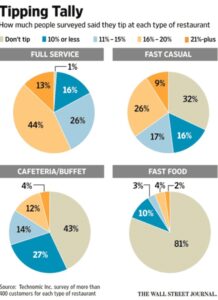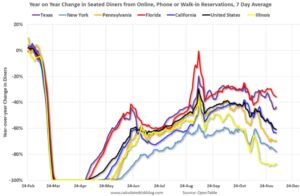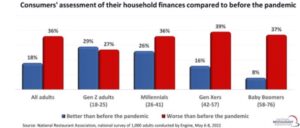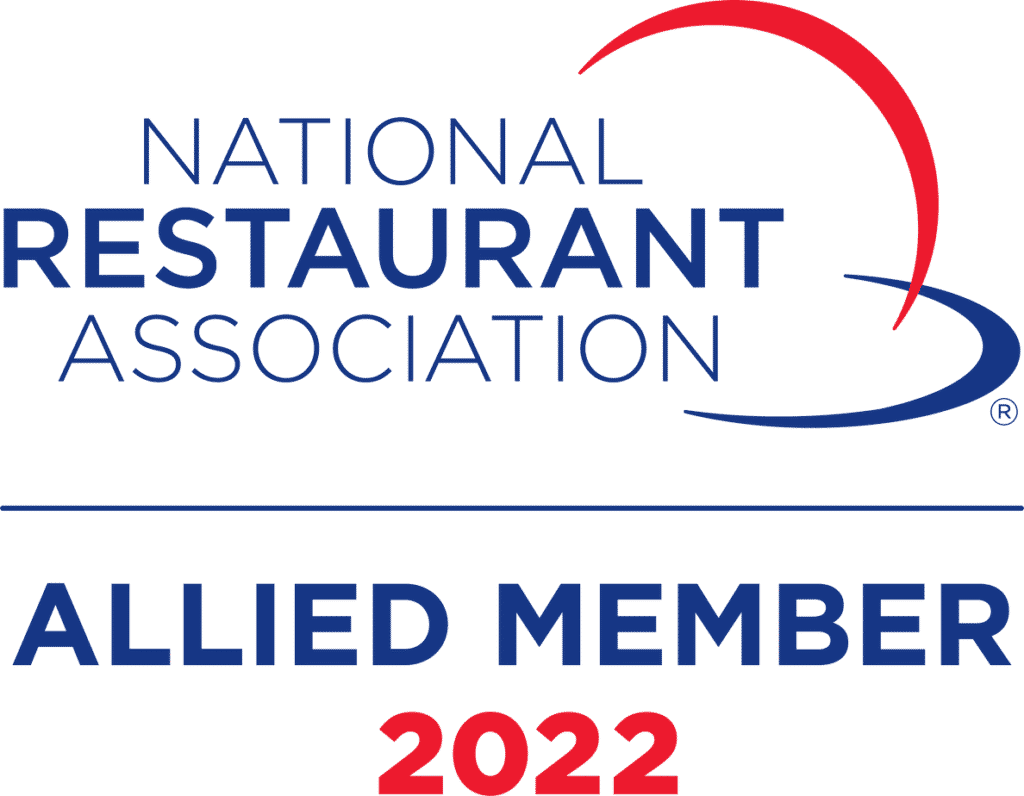Americans are tipping less than they did during the pandemic. This is according to a survey of 2,610 adults about their tipping habits in May 2022, by CreditCards.com. This shouldn’t come as a big surprise. Inflation is hovering around 8%, and gas prices averaging $5 per gallon, doesn’t help. And let’s not leave out the fact that food prices are soaring up beyond 7.5%.
But it’s not just food services taking a hit on tips. It seems that consumers are feeling the pinch on their pocketbooks so they’re cutting back on gratuities.
According to those polled in the CreditCard.com survey, tipping is down compared to 2019:
- 57% stated they always tip their delivery person—down from 63% in 2019
- 73% always tip at a sit-down restaurant—down from 77%
- 43% stated they always tip their rideshare or taxi drivers—down from 49%
In that same survey, it was found that more than one-third of Americans pledged to become better tippers. The main reason was to help support those who had lost wages during Covid. The results reveal that this hasn’t fully materialized. This is in part due to rising prices causing the sentiment to wear off.
Technology Tipping Techniques
But rising prices isn’t the only thing putting a pinch on tips. Another reason for the reduction in tips is that consumers are feeling the effect of “forced tips.” Some customers are beginning to feel uncomfortable with the many requests for tips. When food service businesses began putting tip options for filling an order, people begin feeling pressured into giving more. Additionally, higher menu prices are raising the traditional 15% to 20% tip up to 35%.
Another reason tips may be decreasing is due to more businesses using online apps to accept payments. When customers pay with cash, they tend to tip more. Also, many online payment services calculate tips based on percentages. This might be lower than the amount most people would generally think to tip for a service.

Using Tips for Attraction
It also doesn’t help that some restaurants, in an effort to retain employees, are adding service charges to the bill. Many customers don’t notice the charge until after they’ve calculated and included a gratuity. The concept of adding a service charge of sorts is to help compensate employees and keep them. The thought is that if the customer doesn’t tip well, the employee still gets something. It’s a clever strategy that’s been used for a long time, but more so in this post-pandemic environment.

As Consumer Spending Goes, So Goes Tips
There is a yo-yo effect happening in the hospitality market, and particularly in food services. Consumer spending at restaurants grew by 16% in 2021 compared to 2020 when spending declined by 12%. But now it’s back down. Although consumers are hungry to pursue their previous lifestyles, inflation and the cost of goods is stifling their efforts. The downward trend of spending in restaurants probably won’t be fully understood until 2023.
Generationally, Baby Boomers have already starting conserving, hoping to keep their powder dry until things get better. But the Gen Zs and Millennials see things in a more positive light. They eat out more than other generations and are statistically better tippers. Within those groups, 38% of adults expect their household financial situation to get better during the next 12 months. And only 23% believe things will get worse.

How to Increase Tips
With inflation at a 40-year high and restaurant prices increasing, shelling out a tip is becoming difficult. Latest stats show a 14% increase in the total price on a restaurant receipt. To make up for the increase, guests are ordering less when they go out. The average number of items ordered decreased from 3.8 in 2021 to 3.5 per receipt today. The wall servers are up against is becoming greater. Restaurant managers and owners will have to get creative so that they can attract and keep good workers. With no big break on the horizon and the US economy sliding into a recession, it’s time to get creative.
For tipped employees, the minimum wage paid varies from $2.13 up to $15 per hour, depending on the state. The hourly wage and tip must equal at least $7.25 per hour, according to the US Department of Labor. But if patrons are cutting back on tips, the employee cannot survive. Here are four steps that can be taken to help ensure the employee survives and stays working at the establishment:
- Streamline the menu-Consider offering the top items most people order. If there are items that have high plate costs, consider cutting them from the menu. Sell only those items that will help the customer save while still feeling inclined to tip well.
- Substitute ingredients-Nobody wants to skimp on quality, but perhaps a dish can be made without using costly ingredients or ones that are hard to find. This will help to reduce the menu price as well.
- Consider the service charge-The service charge can be used as wages for any employee. To implement the service charge, there are specific rules that must be followed. For example, it is critical that payment of the service charge be mandatory and not up to the customer’s discretion. The service charge allows the employer to pay the tipped employee when tipping wanes. Recently, restaurant group, Founding Farmers added a 5% surcharge to their meal tickets that they labeled, “restaurant recovery charge.” It was not mandatory meaning that if a customer complained, they would remove the charge.
- Plan the menu-Offer only items that take advantage of deals from vendors. If a particular ingredient is available and less expensive at that time, only offer the dish that includes it. For example, can the beef dish be substituted for the broccoli casserole this month?
Consider even more ways to help your team members who rely on tips. It’s not an easy task, but the creative operators will find a way to help their employees receive their due gratuities.
The Pendulum Will Swing Back
The National Restaurant Association found that food, labor and occupancy costs will continue to remain high, blunting restaurant profit margins in 2022. But tough times rarely last very long. Better days are around the corner, but until then consider all the creative options available. To help those who rely on tips, operators need to find ways to increase customer frequency without sacrificing their margins.
Since consumers are still willing to spend on good deals, consider timing restaurant specials. Customers are more likely to treat themselves by eating out on mega pay dates. These include July 1, September 2, September 30, December 2 and December 30. These are key dates when paychecks and benefit payments happen simultaneously. Advertising special menu items during these key dates will bring in more business. And more business means more tips.





